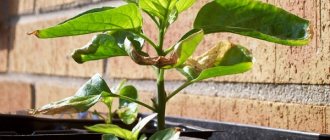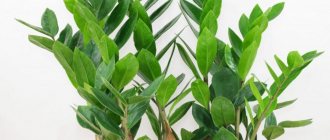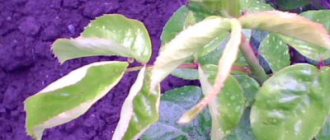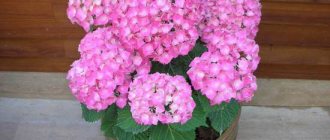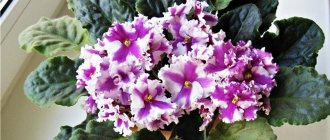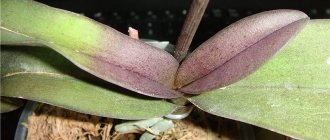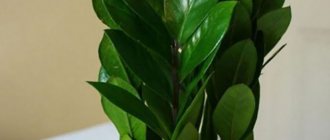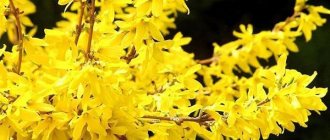- Natural causes of leaf death in Zamioculcas
- Soil depletion
- Insufficient watering of Zamioculcas
- Root system of Zamioculcas.
- Other causes of leaf dying.
After the article about why Zamioculcas does not grow, I receive a lot of questions, both in the comments and by email. And the topics of the questions are similar - the Dollar Tree grows, but when a new shoot grows (in fact, it is a complex leaf), the old one begins to dry out and die. Of course, there are reasons for this. You need to find out using the selection method, analyzing the situation.
Directory of indoor plants
The trunk of the zamioculcas became soft and wrinkled.
Read in today's article, why does the Zamioculcas trunk wrinkle, the leaves fade, and spots appear? We'll tell you what to do to restore zamioculcas. Why does the Zamioculcas trunk shrink?
The shriveled stem and leaves of Zamioculcas do not appear spontaneously - the degradation of the plant is preceded by other visible symptoms, for example, falling leaves, yellowing, and wilting of the plant. We have looked at why the leaves of Zamioculcas turn yellow and dry
What flower growers say:
- The trunk of Zamioculcas shrivels if it is too dry.
- Wrinkled leaves and trunk, softened shoots - flooded, roots rotted.
- The leaves wrinkled - there was little light.
Violations in the regime and volume of watering remain the No. 1 reason why Zamioculcas has a problem with leaves. In this case, the plant can be either yellow or wrinkled - depending on whether it has been dried out or waterlogged. In order not to wait for the leaves to fall, you need to restore moisture.
Inferior, very slow development
Why has Zamioculcas stopped growing or is growing very slowly? Because the plant is not cared for correctly. When the bush stops growing, it begins to lose weight, the stems stretch out, this indicates insufficient lighting. It is urgent to place the pot on a brightly lit windowsill. If this is not possible, then you need to buy a special lamp, the light of which is very close to sunlight. Ordinary household light bulbs will not be able to help in this situation. What to do when zamioculcas does not grow? To solve this problem, you can try to transplant the bush into a larger pot, since zamioculcas can slow down its growth and cause its roots to become crowded. Why doesn't Zamioculcas grow new shoots? Often, zamioculcas does not grow and new branches do not appear because it lacks microelements. It is necessary to fertilize the bush with preparations containing nitrogen, magnesium and potassium. If a plant stops growing, then first of all it needs nitrogen.
How to save Zamioculcas?
- Drenched zamioculcas - dry . Stop watering until the earthen ball is completely dry. Start adding water little by little, taking your time to moisten or increase the moisture concentration. Monitor the condition of zamioculcas.
- Overdried zamioculcas - gradually moisten . Wrinkled from lack of moisture, if there really is any, the leaves of Zamioculcas will return to normal as soon as water arrives. It is important not to flood the tuber with root shoots at once. In addition, be sure to use settled, warm water; Do not direct the stream of water at the root collar.
Zamioculcas with a rotten tuber cannot be saved due to temperature fluctuations, violations of the same watering regime, or direct and concentrated fertilizers. It is necessary to remove the zamioculcas from the ground, inspect the roots and, if there is something to save, replant it in fresh soil after pruning and processing. In detail: how to save zamioculcas if the tuber has rotted?
What you need to trim the roots: pruning shears, powdered charcoal or Fundazol, as well as fresh soil soaked with a 1% solution of potassium permanganate. How to transplant zamioculcas correctly?
Adjust the lighting - bring Zamioculcas back to life
Lack of sunlight has a bad effect on zamioculcas - the leaves wrinkle due to short-term, poor lighting. Direct rays are also not the best helpers in caring for zamioculcas.
How to properly highlight zamioculcas:
- Increase lighting if it was shaded.
- Do not place in direct light.
- Heat is not lighting.
- Place it on the southeast, southwest window.
Where does Zamioculcas usually stand? In the corner on the floor, near the sofa or bedside table. The place was chosen for the grower, but not Zamioculcas. In such a place, the plant gets sick, catches a cold, and suffers from lack of light. It is correct to place Zamioculcas at home on a stand or high bedside table, close to the window, or in a well-lit area.
Every time before changing the procedural regime, carefully look at the plant: what is missing, what it looks like, what is better to add to the soil or, conversely, what to exclude from the care schedule. The plant is alive, does not rely on calendar moisture or fertilizing, and its development vector changes depending on the microclimate and season. Zamioculcas: signs and superstitions . Listen to your zamioculcas and it will tell you why the trunk is wrinkled , and with the help of our recommendations you can quickly match the problem with the solution.
↓ Write in the comments why the trunk of your zamioculcas is wrinkled? What helped the plant?
Please rate the material you read :)
Main causes of the problem
There are several key reasons why the leaves of this plant may turn yellow. These include:
- Natural reasons.
- Incorrect care.
- Incorrect temperature.
- Presence of pests.
Also, the cause may be various diseases, but we do not separate them into a separate category, because they are all, to one degree or another, provoked by the reasons listed above. For example, rot of stems and roots occurs precisely because of errors in care. You just need to cut off the rot, then treat the cut areas with potassium permanganate.
Now let's look at each of the problems in more detail and figure out what can be done to prevent the leaves of the dollar tree from turning yellow. It also makes sense to watch the video below:
Natural causes
Sometimes the cause of yellowing is not caused by any problems, it’s just that the plant’s old shoot dies off and is replaced by new, young shoots.
This is a natural process that you should not be afraid of. If you see that the sprout is really old (and that the problem is only with it, and not with several cuttings at once), then just let the natural process take place.
Also, naturally, the leaves turn yellow when the plant is replanted - after all, this is stress for it. After some time they will recover and return to normal.
Incorrect care
There are many different ways to improperly care for a money tree, even considering the fact that it is quite unpretentious and can survive even in fairly harsh conditions. Here are the main problems that can be identified.
- Excessive watering. If you see that the soil on which the money tree grows is quite dry, this does not mean that you need to immediately rush to water it. This may cause the tuber to begin to rot. In addition to yellow leaves, characteristic signs of excess moisture include blanching of the leaf lobes and darkening of the spots on the petioles. If you have already “flooded” the plant and its roots are already damaged, you need to cut off the damaged ones and treat the cut areas with crushed coal.
- Insufficient watering. On the other hand, just as there can be too much watering, there can also be too little watering. If a plant does not have enough water, it begins to shed its leaves to increase its chances of survival. The good news is that the leaves will grow back after watering. Do not leave the plant for more than 3-4 weeks without watering. And if you still had to do this, you need to resume watering gradually, first moistening the plant a little several times.
- Lack of light. Despite its unpretentiousness, the money tree cannot do well without good lighting, so move it to where this lighting is available.
Incorrect temperature conditions
A separate point worth highlighting is compliance with incorrect temperature conditions. If the plant is too hot or too cold, its leaves will begin to yellow and die.
The temperature at which the plant is kept should not fall below +18 degrees. But it would be a big mistake to move the plant to a heating device, as it will begin to overheat and moisture will leave it, which will lead to the same result.
Sunburn is also a common problem. If the plant is not only in the heat, but also exposed to direct sunlight, yellow burn spots appear on it.
They usually have an irregular shape and may subsequently increase in size. The plant should be moved and damaged leaves should be treated with Zircon or Epin. There is no need to delete them.
Presence of pests
Usually, if a plant has pests, they cause the leaves to turn yellow not evenly, but in spots that gradually increase in size. The most common pests include the following:
- Aphid. A small insect that can have different colors. It multiplies very quickly.
- Spider mite. You can recognize this insect by the sticky web it leaves on the plant.
- Root mealybug. Damages the roots, leaving formations on them that look like cotton wool.
Although each insect may require a different approach, there are general measures that will help keep your plant more or less safe:
- Purchase insecticides that are sold in specialized stores. Treat the plant according to the instructions.
- If you don’t want to buy insecticides, just treat the plant (all its leaves) with soap foam. After this, the remaining soap should be washed off with warm water.
Why do zamioculcas stems go down and what to do in this case?
Hello, dear readers of my blog! This guest from Tropical Africa flaunts on the windowsills of many residents of the middle zone, delighting with its lush greenery. However, despite its unpretentiousness, failure to comply with certain conditions of detention is fraught with the appearance of various problems. Today I want to figure out with you why the stems of Zamioculcas droop?
What is this connected with?
The plant's homeland is hot Africa, so everything must be done to make the flower feel at home. How are things at home? The sun burns mercilessly, and beneficial rains irrigate the land only from time to time. Therefore, you need to water it abundantly, but rarely, waiting until the earthen clod is completely dry and providing access to light. Although I know owners whose zamioculcas feels great on the shady side, it’s still better not to tempt fate and place the pot with the plant where there is enough light.
If you notice that the stems of your dollar tree have begun to droop, the main reasons may be:
- Insufficient lighting. Often our compatriots buy indoor flowers to decorate the interior, placing pots on the floor near sofas and other pieces of furniture. If the wall opposite is not made of glass, then the flower will be dark and it will begin to wither.
- Failure to comply with temperature and humidity conditions. The flower tolerates air temperatures up to +30 ᵒС and above perfectly, but its decrease is undesirable. And if you consider that in the summer we escape the heat with the help of air conditioners, then it is quite natural that the plant does not like it. Make sure that the air in the room does not cool below +18 ᵒC and do not try to moisten it too much by spraying around the flower.
- Overwatering. Are the stems turning black and shriveling? Most likely you flooded Zamioculcas. This is very dangerous, as the roots may rot and it will be more difficult to save the plant. Remove it from the pot and inspect it for rotten roots. If there are any, remove them, treat the cut areas with charcoal, and in more severe cases, you can use “foundazol” or “epin”. Dry the tuber for 2 hours, and then transplant it into a new substrate and do not touch it for a day or two. Then start watering little by little.
What to do if you don’t water the plant often, but the soil doesn’t have time to dry out and even becomes covered with mold on the surface? Firstly, the soil must be suitable for such a lover of arid climates. Add more sand to it, or even better, buy a special one for succulents. Secondly, the pot itself must be breathable, so plastic containers are not suitable for this. There is nothing better than clay ones yet. In such a pot you won’t even notice how quickly the soil dries out - I checked it for myself. And mold will never appear. Don't forget about the thick layer of drainage at the bottom of the pot.
Prevention measures
The simplest way to prevent the death of a plant is to maintain it correctly:
- Observe the water regime (in summer, watering a maximum of 2 times a week, in winter - only after the earthen clod has dried out).
- Feed on time (1-2 times a month from April to October, do not fertilize in winter).
- Keep in a well-lit place, but keep away from direct sunlight.
- Avoid sudden changes in temperature, cold, and exposure to air conditioning.
The main enemy of the dollar tree is overwatering. It’s easy to control the condition of the earthen clod: it’s enough to periodically pierce it with a wooden stick in order to have an idea of whether the soil throughout the entire volume of the pot has dried out or not.
To ensure that Zamioculcas grows healthy, check the flower after purchasing it or receiving it as a gift. If his condition is suspicious, keep him in quarantine. Having discovered a pathology, try to identify it and take measures to get rid of the disease or parasites.
Why did Zamioculcas get sick, and how to help your favorite plant
Zamioculcas needs quite competent care Zamiocúlcas, the celibate flower or dollar tree, belongs to a monotypic genus of plants from the Araceae family. The plant’s homeland is tropical Africa, and when cultivated in our country, flower growers may encounter problems such as zamioculcas drying out and not producing new shoots or not growing and slowly dying. That is why, when growing ornamental crops, it is very important to do timely disease prevention, as well as to follow agricultural practices.
Botanical characteristics
The herbaceous plant has a thick, tuberous rhizome and glossy, dark green, pinnate foliage. The average leaf length reaches a meter. The leaves have swelling at the base. Less than ten years ago, breeders obtained a miniature cultivar of the plant, represented by a compact bush no more than 0.6 m high, with small foliage.
Zamioculcas are unpretentious plants and can easily tolerate low air humidity levels, as well as partial shading. However, for full growth and development, the plant needs bright rooms and the absence of direct sunlight. Decorative crops do not respond well to excessive soil moisture and stagnant moisture, so irrigation measures must be strictly regulated. If a houseplant is heavily flooded, it means that it will not be possible to easily save the ornamental plant, and a whole range of restoration measures will be necessary.
Zamioculcas are unpretentious plants and can easily tolerate low air humidity levels.
Zamioculcas does not have any special requirements for the soil composition, so the indoor plant grows well in self-made soil based on turf, leaf soil and medium-grained sand, which are mixed in a 1:1:1 ratio. The crop can be propagated by dividing the tuber, as well as by rooting a leaf or a separate leaf blade.
Zamioculcas inflorescences are inconspicuous and not very decorative; they are light cream spadixes formed on short and thick peduncles. The inflorescence is surrounded by a light green blanket. In home floriculture, zamioculcas bloom extremely rarely. It should be noted that the plant is poisonous, therefore, when replanting and pruning or forming branches, as well as dividing tubers, increased precautions must be taken using rubber gloves.
How to save Zamioculcas (video)
Doesn't give rise to new shoots
The main vital organ of any plant is the root system, which in Zamioculcas includes a large tuber and the roots themselves growing from its apical part. At the first stage, the plant masters the volume and fills the flower pot, after which the moisture-storing tuber grows. During this period, there is no development of the aboveground part of the plant.
Among other things, Zamioculcas is a southern plant, so the activation of growth processes, accompanied by the formation of new shoots or stems, begins quite late and continues until the last ten days of winter. The formation of shoots is observed in the so-called reserve buds, and the density of an adult ornamental bush is directly proportional not only to the size, but also to the number of tubers.
Zamioculcas ill health manifests itself in the appearance of yellow spots
The plant dries up
When growing zamioculcas, it is very important to take into account the biological characteristics of this southern ornamental crop, since otherwise the plant gets sick, and the ill health of zamioculcas is manifested in the appearance of yellow spots, drying of the tips of the leaf blades, and loss of elasticity of the stem part. Failure to comply with agricultural practices causes yellowing, reduction of leaf lobes and blanching. Such problems threaten not only the complete loss of decorativeness, but also the death of the plant.
Sometimes dark spots appear on the above-ground parts of the plant. The reasons for this phenomenon may be represented by too wide a range of temperature indicators in the growing room, the negative impact of drafts and abundant watering of zamioculcas. To rid plants of spots on the foliage, it is necessary to completely eliminate the presence of negative and traumatic factors for the ornamental plant, including changes in the irrigation regime and temperature changes. It is important to remember that the appearance of dark spots on the foliage may also indicate damage to the ornamental crop by plant parasites.
Zamioculcas: cultivation (video)
Why is an indoor flower crying?
All amateur flower growers involved in growing zamioculcas in indoor floriculture are very well aware of such an interesting phenomenon as the crying of a decorative flower, which is accompanied by the appearance of drops of moisture at the tips of the foliage, truly reminiscent of tears. The indoor ornamental plant cries when treated poorly, including damaged leaves, overfertilization, and excessive irrigation.
Other diseases
Many diseases of ornamental crops are the result of improper care. Excessive watering can reduce the supply of oxygen and reduce soil drainage, which makes adequate nutrition of the root system of an ornamental crop impossible. The roots begin to rot, and nutrients do not reach the plant, which causes weakening of the stems. Thin and exhausted stems quickly droop. Also, thin trunks of Zamioculcas grow in insufficient light. There are situations when the trunk disappears, but the plant can still be saved and, as a result of following agricultural practices, new shoots appear from the underground part.
Zamioculcas cries when treated poorly, including injured leaves, overfertilization, and excessive irrigation.
Pests
Below are the two most common pests of Zamioculcas:
Flower midges
What to do if there are midges in Zamioculcas?
Black flying midges breed in conditions of constant dampness . Adults live on the surface of the plant, and eggs are laid in the ground. The larvae also live in the soil, eating roots.
To completely get rid of pests, you need to dig up the zamioculcas and lay it out to dry. At this time, dispose of the soil from the pot, treat the container with boiling water or strong potassium permanganate, and fill it with fresh soil.
After drying, inspect the tuber and roots, cut off all suspicious areas, and treat with weak potassium permanganate . Instead, you can use crushed charcoal by simply dipping all the roots into it. These products perfectly disinfect fabrics, preventing rotting and the spread of pests.
Now the dollar tree can be planted in new soil, but do not water it ! Leave the flower alone for several days, watching for the possible appearance of midges again. To prevent their new attack, water only through the pan.
Aphid
The omnivorous pest does not ignore Zamioculcas. Small insects multiply quickly, forming large colonies on the inside of leaves. If aphids are not exterminated in time, they can simply destroy the plant. Most modern insecticides , for example, Intavir, Fas, Actellik, Decis, Karate.
Among folk remedies, herbal decoctions of dandelion, marigold, and tansy work well.
Zamioculcas is an amazingly tenacious and viable plant! Even if it loses its roots or leaves, it can be reborn from almost nothing. If you follow the recommendations of experts, you will not have to deal with pests and flower diseases at all.
Zamioculcas - dollar tree
The popular name for Zamioculcas is dollar tree, I only recently learned about it. Last year I chose a flower for a friend’s birthday. I tried to take into account the features of her apartment.
The seller advised me to take a dollar tree. I was confused and asked to clarify what it was, they showed me Zamioculcas. This plant had been in the store for several months, and since it was January, this fact played a decisive role (it was a cold winter and the flowers could have been damaged during transportation).
At home I noticed that the Zamioculcas seemed to be “jumping” out of the pot. The seller advised to replant it. I chose a slightly larger pot. When transplanted, the plant split into several pieces. As a result, one part remained with me. Later I regretted that I started the transplant during the cold period.
The plant that I gave to a friend was partially lost - some sections rotted. After some time, the remaining part of mine also rotted. So much for dubious guarantees - staying in the store for several months. Everything was decided by an untimely transplant.
Almost a year has passed. I recently noticed that my friend now has two dollar trees. The second one was given to her as a shoot. It was summer, and it took root well.
Zamioculcas belongs to the aroid family - these are the well-known Dieffenbachia, Philodendron, Monstera, etc. Over the past ten years, Zamioculcas has become widespread among gardeners.
It ceased to be exotic and, accordingly, began to be in less demand. There is no chic or beauty in his appearance, so I always put off the purchase until later. And after I bought it as a gift, I completely lost interest.
But a friend gave me a leaf from Zamioculcas (she accidentally broke it). The leaf was at least 30 cm, with a thick petiole and succulent leaves. I cut off the top, separated several lower leaves, and began to root. I placed a large leaf in a vase with slightly damp vermiculite.
The remaining parts were also rooted in vermiculite, but in a closed container. All parts took root in about a month and a half. But the smaller ones - the top of the leaf and leaves quickly fell into a period of dormancy, i.e. their leaves have turned yellow. I found several nodules 1 cm in diameter in vermiculite. The larger leaf took longer to take root.
I planted it in a tall, narrow pot with good drainage. It was a warm period. Rarely watered. I also planted the nodules, but in a small pot. They never sprouted.
The large leaf did not grow at all in the first year. He stood and stood. Then something strange appeared at the base. It even seemed to me that it was a bud, but a leaf appeared, only small in size. Its leaves were also small. During the spring-summer period, Zamioculcas produced three more large leaves, but the first one remained juvenile.
Zamioculcas stood on the kitchen window. I did not suffer from the heat. Closer to winter, I had to move it to the other, darker side of the window sill. This immediately affected the color of the new leaf - it grew light green.
I don't know if the color will change in the summer. I noticed that in many institutions zamioculcas are placed quite far from the windows, as a result they stretch out and the “bush” falls apart.
The summer was hot, so I did not fertilize. Only occasionally did I add Baikal-EM1 to the irrigation water. Watered only when the top layer of soil was completely dry. In winter I adhere to the same theory.
Streptocarpus. Care, propagation Compared to Saintpaulias and Gloxinias, other representatives of the Gesneriaceae family are not so universally known, although among them there are no less charming plants, for example, Streptocarpus and Achimenes.
Reproduction
Zamioculcas can be propagated in several ways:
- dividing the root
- cuttings
- leaf plates.
Tuber division almost always results in damage. Since the roots grow very tightly together, it is very difficult to break them with your hands.
- A sharp, disinfected knife is used for division.
- Sprinkle the resulting sections with crushed activated charcoal or charcoal and dry the section a little.
- The leaves were cut into cuttings 15–20 cm long.
- I treated the upper and lower cuts with crushed activated carbon and let them dry a little.
- Then she planted it in nutritious loose soil with perlite.
- I didn’t organize a greenhouse, I rooted them in the summer, they stood on the porch.
- I watered it every day.
After 2 months, I dug up one of the cuttings and saw at the end a rather large nodule with fleshy roots. I planted it in a separate pot, but noticed that it got a little sick before it started growing again. I have already replanted the remaining cuttings with a clod of earth in order to injure the plants as little as possible.
I planted several cuttings in one pot, so that when the leaves grew, the plant would be lush and immediately look very presentable.
I would like to note that at first the cuttings grow underground roots, and there are no above-ground leaves. It may even seem that the plant is not growing, but just cuttings standing. I was guided by the condition of the cuttings themselves. If they do not lose turgor and their original green color, then the process is underway. You just need to be patient.
Adult zamioculcas is best propagated by dividing the bush during the next spring transplant. To do this, the tubers are carefully separated from each other, trying not to break off the roots.
If damage occurs, these places must be covered with charcoal to protect against fungus.
There are several methods of reproduction. Let's look at each in more detail.
Reproduction occurs with a leaf taken from an adult crop. The procedure is as follows:
- Cut off the leaf and leave it for several hours to dry.
- Dip the cut area into the root formation stimulator - Kornevin.
- Transplant the planting material into the prepared soil mixture.
- After 3 days, water the soil and spray the leaves with water.
- All that remains is to wait for the roots to begin to form on the tuber. It takes 2-3 months.
Zamioculcas | Zamioculcas (Dollar Tree) – Planter Zone
Family Araceae. Homeland o. Madagascar. Zamiakulkas is an evergreen tuberous plant with dark green, fleshy leaves that are pointed at the end. The surface of the sheet is glossy. The stems are thick, the leaves sit on them symmetrically, alternately. The plant is large, grows in an apartment to a height of about 1-1.5 meters. It blooms in indoor conditions, if it is provided with appropriate conditions for keeping white flowers, but at a fairly old age. Undemanding in culture.
Temperature: Moderate, preferably 16-18 °C in winter, but not lower than 12 °C.
Lighting: A bright place with diffused light. In summer, he prefers to sit outdoors - on the balcony, in the garden, etc. In winter, you will have to move the zamioculcas closer to the window.
Watering: Moderate from spring to autumn, but no water should remain on the tray; watering is rare in winter; the soil should dry well before the next watering. Zamioculcas tolerates some dryness more easily than stagnant water in the soil - this can lead to rotting of the roots and the formation of stem rot.
Fertilizer: From April to August, fertilizing is carried out every two weeks, since Zamioculcas quickly consumes nutrients. You can use fertilizers for cacti and succulents.
Air humidity: Zamioculcas does not require spraying the leaves, but sometimes it is necessary to wash them so that the plant does not become dusty and does not lose its attractiveness. In summer, outdoor rainfall is sufficient.
Yellowing of the lower leaf segments
Symptoms
Individual leaf blades (component parts) turn yellow and fall off, starting from the bottom of the complex leaf of the plant.
Cause
The most likely reason is regular waterlogging of the soil . It is worth reviewing the watering regime , otherwise the process may become irreversible and you will lose the entire plant. Zamioculcas is a succulent that stores water for future use in almost all its parts, so it does not need excess moisture .
Wendy Cutler / Flickr.com
How to water correctly
In winter, watering is very moderate , especially if the contents are cool (less than +15 ° C). In summer, watering needs to be increased slightly , but the soil in the pot should always dry out 2/3 of the volume between waterings.
- It is very important to select pots that match the size of the plant's root system and suitable soil that drains moisture well. And never leave water in the pan for zamioculcas!
Forest and Kim Starr / Flickr.com
Zamioculcas turned yellow:
When the leaves turn yellow, does the plant still produce young shoots? This means everything is fine. This is a natural biological process of renewal. Young leaves, being more active, take all the necessary nutrients from the soil, leaving almost nothing for more mature leaves. In this case, you should pay attention to the presence of dark spots on the leaves. Dry spots are no reason to worry; the plant is fine. It does not require any additional care or external intervention. But frequent and abundant watering can lead to yellowing of the plant. Reducing the volume of fluid may not always be a solution to the problem. Often you have to take the plant out of the pot to examine it for rotting areas of the root system. They are removed by sprinkling the cut areas with crushed coal, treated with special substances that prevent the development of rot, and transplanted into a new substrate.
Zamioculcas tolerates changes in temperature in the room very poorly.
The plant may react to this by turning yellow and falling leaves. Indoor species are more heat-loving plants than their wild relatives. They can react to absolutely any vibrations, be it a breath of wind from an open window, a running fan or any heating device. In winter, when the indoor temperature rises, it is recommended to humidify the air.
Falling leaves
Another reason for yellowing of leaves and their falling can be cold air or too sudden temperature changes in winter, especially if the plant is standing on the floor.
It happens that during the day the house is very warm (in sunny weather, for example), and at night the temperature drops sharply. excessive changes are harmful for any plant . It is better if the room is either consistently cool or consistently warm.
- Sudden changes in temperature or light levels can also cause suddenly rather than gradually .
Forest and Kim Starr / Flickr.com
Zamioculcas what to do if the tuber has rotted:
The reason for this condition is, again, excessive watering of the plant. He urgently needs to be transplanted. Soil for replanting must be purchased at a specialized store; ordinary soil from the street will not help restore the plant. Such store-bought substrates are rich in all the microelements necessary for the rapid recovery of the plant. A sharp knife will help cut off all the rotten elements of the rhizome; the remaining healthy part in the cut areas is treated with special solutions. Only after this the plant is ready for transplantation. The zamioculcas should stand in peace and quiet for a day after transplantation. No fertilizers or other means are allowed. After time has passed, you can begin to water carefully. Organic fertilizers will be useful in a week; you must continue to apply them for 1 month, no more than once a week.
Proper care
Although the flower is unpretentious, in order for it to feel excellent, the conditions of its maintenance must be very similar to natural ones. If zamioculcas is grown in apartment conditions, then it is better to place the pot with it on the southern windowsill. To speed up the growth of new branches and the appearance of shoots, the flower must receive enough sunlight. If light falls on the bush only occasionally, the leaves will grow more slowly and become smaller. When it is warm outside, it is advisable to keep the plant either outside or on the balcony. Many gardeners recommend placing zamioculcas in the fresh air. The soil for this plant should not be heavy or clayey. It is advisable to plant this flower in a light and loose substrate, which should contain river sand. A good option would be to buy cactus soil at a flower shop. To remove excess moisture, it is advisable to add a layer of drainage to the bottom of the pot; this can be large screenings, pebbles or expanded clay. Zamioculcas grows well in poor soil, but it is advisable to feed the bush from time to time; fertilizers will benefit it. It is necessary to apply fertilizing only during the period of active growth of this plant. Fertilizers for cacti would be suitable; they need to be applied in small portions about once a month, or less often. When the flower goes into a dormant state, there is no need to fertilize it, otherwise next season the bush will be exhausted, grow poorly and often get sick. Watering during the dormant period is also necessary to a minimum. Transplantation is necessary for zamioculcas only when the root system becomes very crowded. In this case, you just need to change the pot to a larger flowerpot. In order for the transplant to be successful and the bush to quickly take root in a new place, the tubers do not need to be buried completely; their surface should always be open. So, for Zamioculcas to develop and grow normally, it needs a lot of sunlight, the room should be warm, and watering should not be excessive. The plant definitely needs a dormant period when it does not need to be fertilized and practically does not need to be watered. During the dormant period, you need to moisten the soil once or twice a month. There are various problems that occur when growing this flower, for example, Zamioculcas does not produce new shoots or Zamioculcas does not grow.
Zamioculcas has a shriveled stem:
Most likely the roots were damaged due to excessive watering of the plant. Some of them cannot function fully, and the remaining “working” parts of the root system do not have time to supply the entire plant with water. To restore the functioning of the root, zamioculcas must be removed from the old soil, cleaned of all dead parts, dried, sprinkled with crushed coal and replanted in soil with a large amount of sand. The pots should not be large; only tubers should be placed in them.
Frostbite and sunburn of succulent
Zamioculcas is an inhabitant of the tropics and responds positively to heat and light, however, prolonged exposure to direct sunlight negatively affects its condition. A significant drop in air temperature is also detrimental to this plant.
If the leaves of zamioculcus turn yellow, covered with ragged spots, then turn black and fall off, the gardener should know what to do to save the exotic flower. If the reasons for the deterioration of the plant’s condition are associated with burns or frostbite, then you need to act as follows:
- You should remove the pot with the succulent to another, more suitable place - away from drafts, scorching rays, and cold.
- During the midday heat, you should take care of shading the flower; for this you can use a curtain or a piece of white paper.
- Zamioculcus plates can be sprayed with a solution of an adaptogenic agent - zircon, epin, biostimulated (kept in a dark, cool place) agave juice or aloe vera. This procedure will allow the injured “pet” to recover faster.
